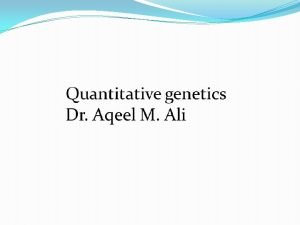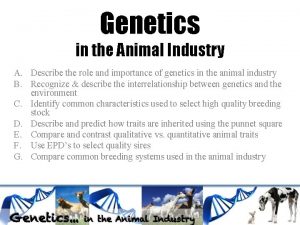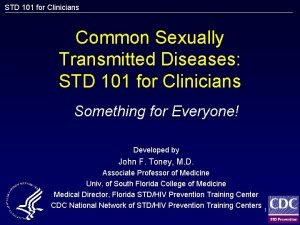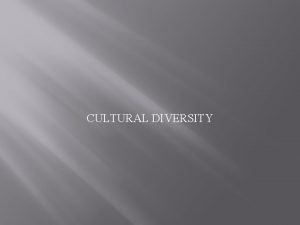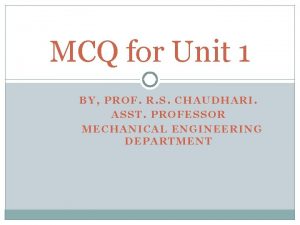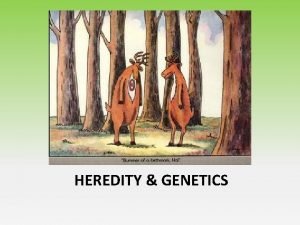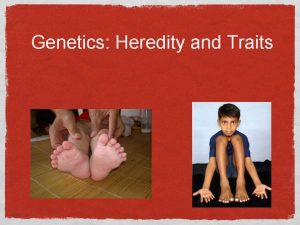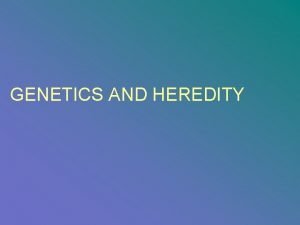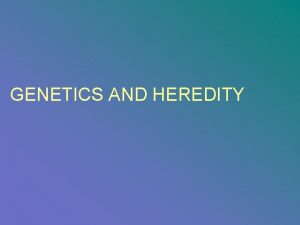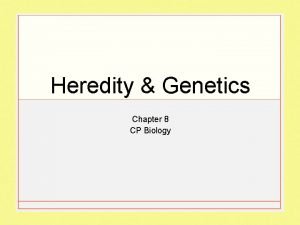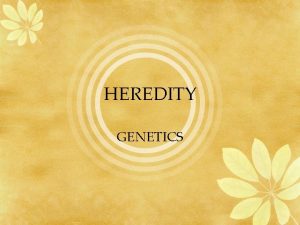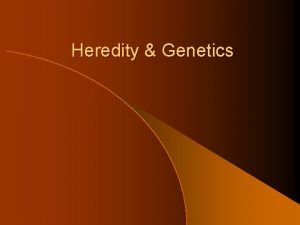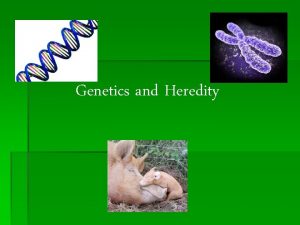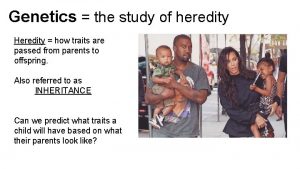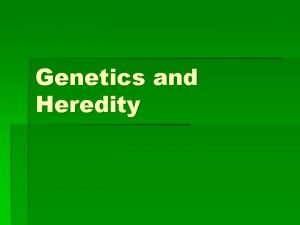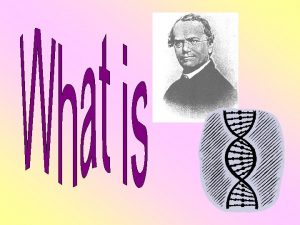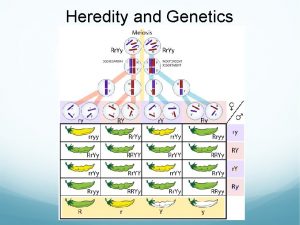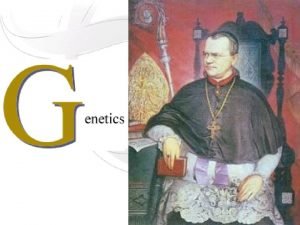GENETICS heredity concerned with how traits are transmitted
















- Slides: 16

GENETICS • heredity; concerned with how traits are transmitted from generation to generation. • analyzing evolutionary processes • identifying and mapping genes • analyzing molecular features of genes and regulation of gene expression.

Heredity ü All humans are united by a common set of traits, or observable characteristics ü Characteristics define species ü All of these characteristics are inherited ü Variation exists ü Affects of the environment on characteristics

Milestones in Genetics • Gregor Mendel analyzed quantitatively the results of crossing pea plants. • 1972, Paul Berg constructed first recombinant DNA in vitro. • 1973, Boyer and Cohen’s cloning of first recombinant DNA molecule. • 1986, Polymerase Chain Reaction (PCR) to amplify specific gene squences.

Genetics – divided into four branches • 1) Transmission genetics – Transmission of genes from generation to generation • 2) Molecular genetics – Structure and function of genes at the molecular level • 3) Population genetics – Distribution and behavior of genes within and between populations • 4) Quantitative genetics – Heredity of traits in groups of organisms associated with multiple traits

Transmission Genetics Basics • Mendel’s pea experiments (e. g. , white & purple flowers) • Two copies of each gene, one from each parent • Homozygous: same allele; heterozygous: different alleles • Dominant, recessive, incompletely dominant

Phenotype & Genotype • Phenotype = appearance of an organism (the expressed characteristics) • Genotype = genes that influence the expression of that characteristic (underlying the phenotype) The specific alleles that the organism carries for the gene (or genes) that influence the phenotype in question…

Fig. 10. 4 Seven character pairs in the garden pea that Mendel studied in his breeding experiments Peter J. Russell, i. Genetics: Copyright © Pearson Education, Inc. , publishing as Benjamin Cummings.

polymorphism • The existence of naturally occuring variations in a population of organisms • The forms can be called “morphs”

DNA, GENES, CHROMOSOMES • DNA (deoxyribonucleic acid) is the genetic material for both prokaryotes and eukaryotes; viruses may have RNA genomes • DNA has two chains, each made of nucleotides composed of deoxyribose sugar, a phosphate group, and a base forming a double helix (FIG. 1. 1)

Fig. 1. 1 DNA Peter J. Russell, i. Genetics: Copyright © Pearson Education, Inc. , publishing as Benjamin Cummings.

DNA STRUCTURE • Four bases of DNA: A (adenine), G (guanine), C (cytosine) and T (thymine); in RNA U (uracil) replaces T. • GENES: specific sequences of nucleotides that pass traits from parents to offspring. • CHROMOSOME: is where the genetic material is organized structurally. • GENOME: total amount of genetic material in nuclear chromosomes.

Fig. 1. 3 Transcription Peter J. Russell, i. Genetics: Copyright © Pearson Education, Inc. , publishing as Benjamin Cummings.

Population Genetics • What is the observed level of genetic variation in populations? • How allele frequencies change over time? • What models can explain the change in allele frequencies?

FORCES OF EVOLUTION • Mutation: heritable changes in the genetic material • Recombination: exchange of genetic material • Selection: favoring particular combinations of genes in a given environment

Quantitative Genetics • Continuous traits display a range of phenotypes? • Is the trait polygenic? • How much environmental factors influence the range of trait characters? • What is the heritability of the trait?

Fig. 1. 6 Example of a genetic map, here some of the genes on chromosome 2 of the fruit fly, Drosophila melanogaster GENETIC MAP: show arrangement of genes; distances between genes. LOCUS indicates the position of the gene on the map, as well as the chromosome in which it is located. DISTANCE between genes can be calculated from the results of the genetic crosses by counting the frequency of recombination. Peter J. Russell, i. Genetics: Copyright © Pearson Education, Inc. , publishing as Benjamin Cummings. USES OF GENETIC MAPS -whether genes with related functions or with similar expression profiles located in proximity to each other -helps in cloning and sequencing genes of interest or in genome projects (e. g. , Drosophila, human).
 Insidan region jh
Insidan region jh Genetics is the study of heredity and variation
Genetics is the study of heredity and variation Chapter 17 the beginning of the life cycle
Chapter 17 the beginning of the life cycle Quantitative and qualitative traits
Quantitative and qualitative traits Qualitative traits vs quantitative traits
Qualitative traits vs quantitative traits Qualitative traits vs quantitative traits
Qualitative traits vs quantitative traits A song transmitted orally which tells a story
A song transmitted orally which tells a story Std
Std Electronically transmitted postal ballot system
Electronically transmitted postal ballot system Oblique light examination in questioned document
Oblique light examination in questioned document Std
Std The totality of learned socially transmitted behavior
The totality of learned socially transmitted behavior A bacterial std that usually affects mucous membranes
A bacterial std that usually affects mucous membranes Nursing management of reproductive tract infection
Nursing management of reproductive tract infection Chapter 24 sexually transmitted diseases and hiv/aids
Chapter 24 sexually transmitted diseases and hiv/aids Rope brake dynamometer uses mcq
Rope brake dynamometer uses mcq Chapter 24 lesson 1 sexually transmitted diseases
Chapter 24 lesson 1 sexually transmitted diseases




